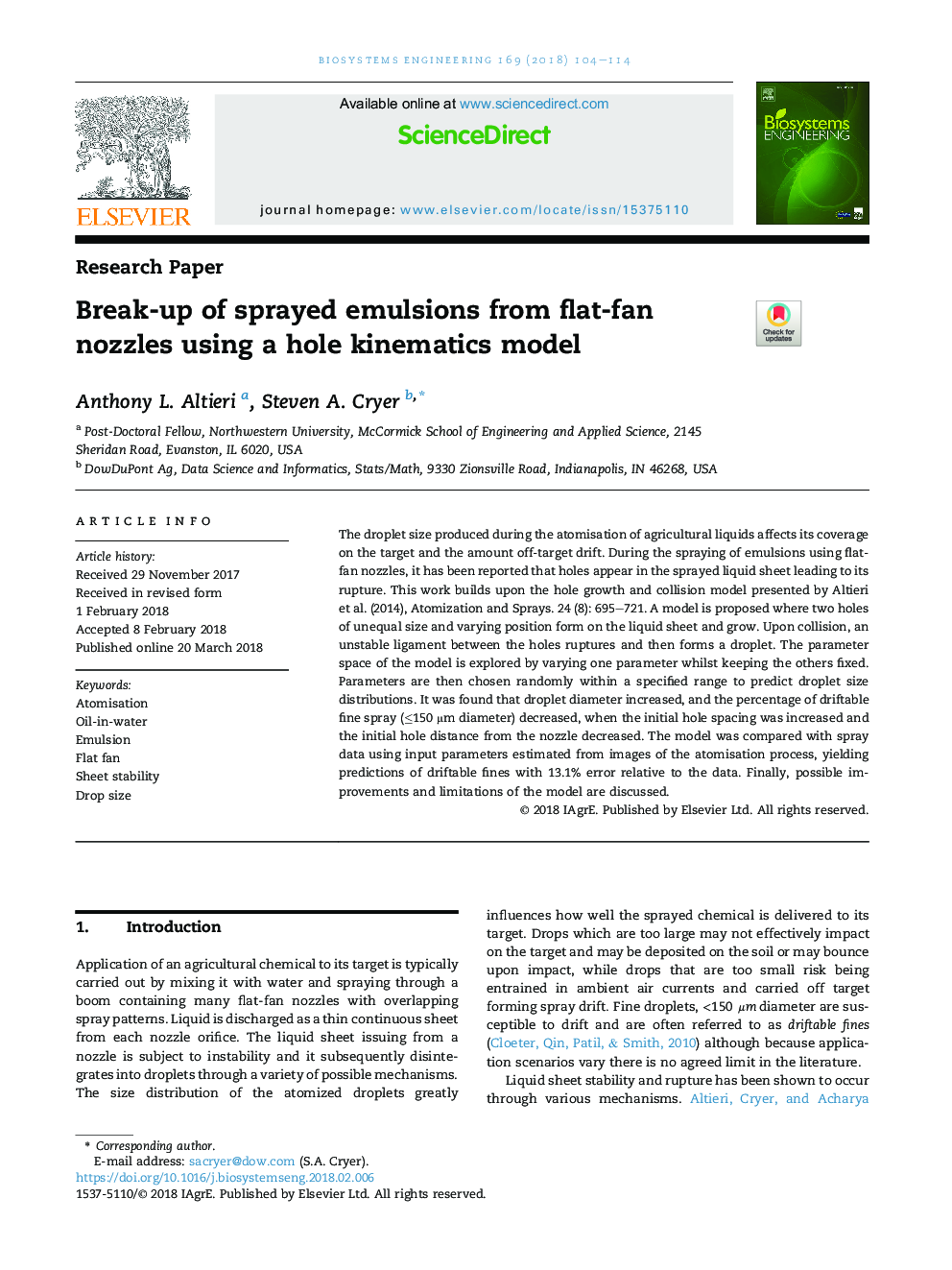| Article ID | Journal | Published Year | Pages | File Type |
|---|---|---|---|---|
| 8054737 | Biosystems Engineering | 2018 | 11 Pages |
Abstract
The droplet size produced during the atomisation of agricultural liquids affects its coverage on the target and the amount off-target drift. During the spraying of emulsions using flat-fan nozzles, it has been reported that holes appear in the sprayed liquid sheet leading to its rupture. This work builds upon the hole growth and collision model presented by Altieri et al. (2014), Atomization and Sprays. 24 (8): 695-721. A model is proposed where two holes of unequal size and varying position form on the liquid sheet and grow. Upon collision, an unstable ligament between the holes ruptures and then forms a droplet. The parameter space of the model is explored by varying one parameter whilst keeping the others fixed. Parameters are then chosen randomly within a specified range to predict droplet size distributions. It was found that droplet diameter increased, and the percentage of driftable fine spray (â¤150 μm diameter) decreased, when the initial hole spacing was increased and the initial hole distance from the nozzle decreased. The model was compared with spray data using input parameters estimated from images of the atomisation process, yielding predictions of driftable fines with 13.1% error relative to the data. Finally, possible improvements and limitations of the model are discussed.
Related Topics
Physical Sciences and Engineering
Engineering
Control and Systems Engineering
Authors
Anthony L. Altieri, Steven A. Cryer,
